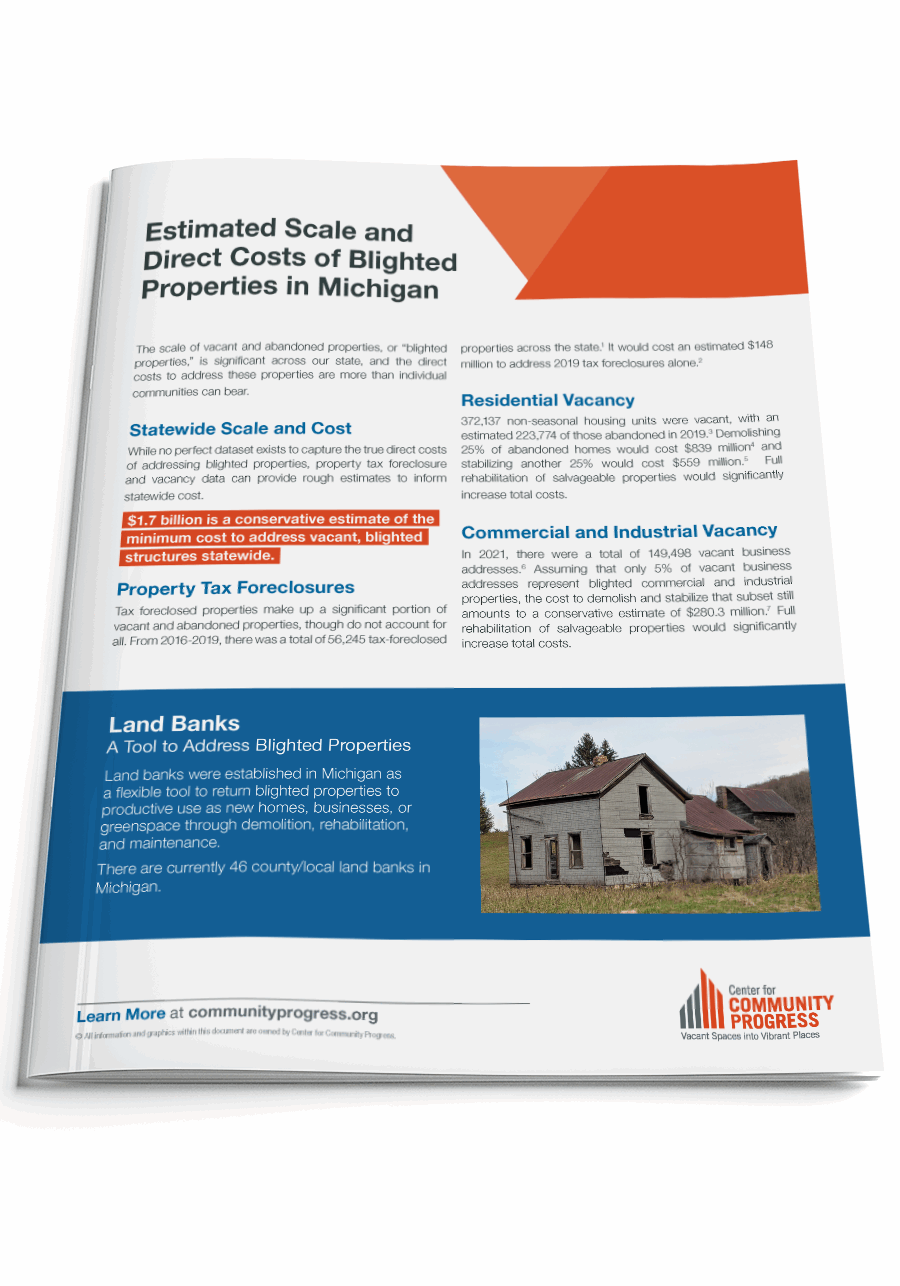The Scale and Cost of Blight in Michigan
A One-Page Brief
Topic(s): Land Banks, Property Tax System, State & Local Analysis
Published: June 2022
Geography: Michigan
Author(s): Center for Community Progress
The scale of vacant and abandoned properties, or “blighted properties,” is significant across our state, and the direct costs to address these properties are more than individual communities can bear.
Statewide Scale and Cost
While no perfect dataset exists to capture the true direct costs of addressing blighted properties, property tax foreclosure and vacancy data can provide rough estimates to inform statewide cost. $1.7 billion is a conservative estimate of the minimum cost to address vacant, blighted structures statewide.
Property Tax Foreclosures
Tax foreclosed properties make up a significant portion of vacant and abandoned properties, though do not account for all. From 2016-2019, there was a total of 56,245 tax-foreclosed properties across the state. It would cost an estimated $148 million to address 2019 tax foreclosures alone.
Residential Vacancy
372,137 non-seasonal housing units were vacant, with an estimated 223,774 of those abandoned in 2019. Demolishing 25% of abandoned homes would cost $839 million and stabilizing another 25% would cost $559 million. Full rehabilitation of salvageable properties would significantly increase total costs.
Commercial and Industrial Vacancy
In 2021, there were a total of 149,498 vacant business addresses. Assuming that only 5% of vacant business addresses represent blighted commercial and industrial properties, the cost to demolish and stabilize that subset still amounts to a conservative estimate of $280.3 million. Full rehabilitation of salvageable properties would significantly increase total costs.
Download and share this one-page explainer today.

Topic(s): Land Banks, Property Tax System, State & Local Analysis
Published: June 2022
Geography: Michigan
Related Publications
Other Related Content
Subscribe to join 14,000 community development leaders getting the latest resources from top experts on vacant property revitalization.
